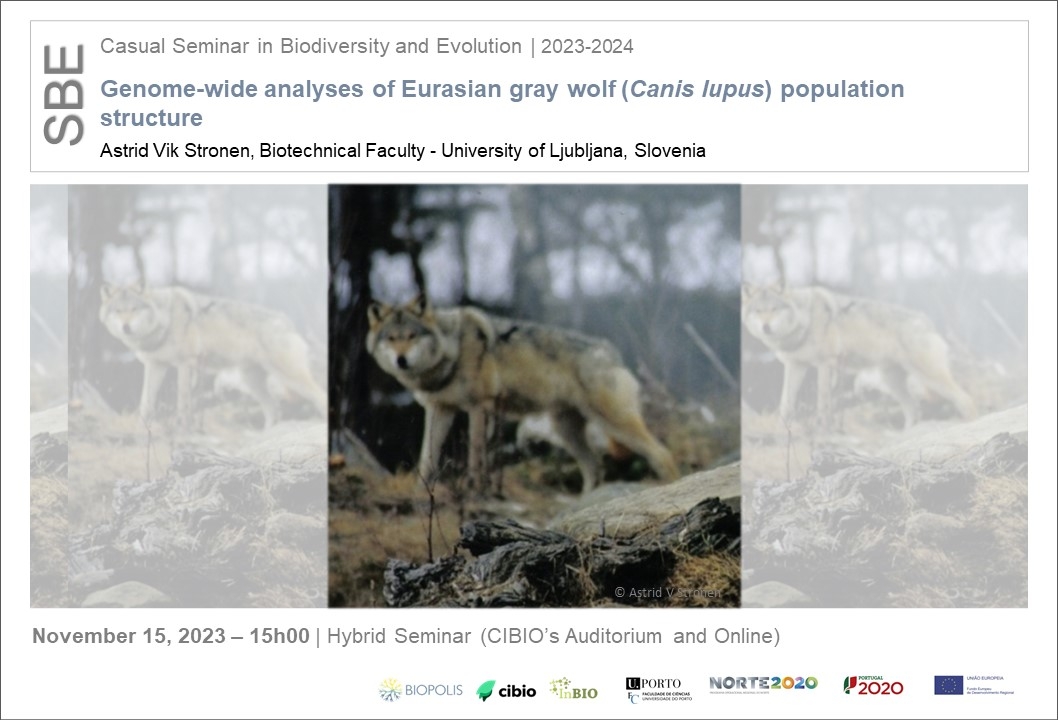Genome-wide analyses of Eurasian gray wolf (Canis lupus) population structure
Event
CASUAL SEMINAR IN BIODIVERSITY AND EVOLUTION
November 15th, 2023
Astrid Vik Stronen, Biotechnical Faculty - University of Ljubljana, Slovenia | 15h00 | Hybrid Seminar

CASUAL SEMINAR IN BIODIVERSITY AND EVOLUTION
Wide-ranging species such as the gray wolf can disperse several hundred kilometers, although recent studies demonstrate that their population structure at times reflect physical, environmental, or ecological boundaries. For certain populations this structuring represents long-standing isolation and genetic drift, whereas for others there does not appear to be obvious barriers to dispersal. In Eurasia, especially in the western part, north-south gene flow may be more limited than that occurring east-west because of physical features including mountain chains and water. We examined genomic profiles from across Eurasia to determine broad-scale population genetic structure, where we expected stronger north-south than east-west structuring, and a higher degree of isolation and genetic drift in peninsular populations. We analysed over 700 wolves genotyped with more than 170,000 single nucleotide polymorphism (SNP) loci. These comprise samples from central and eastern Russia and the Caucasus, and in Europe we sampled wolves from the Dinaric-Balkans, Italy, and Iberia in the south to Scandinavia in the north. We examined population genetic structure and assessed population differentiation and the relationship among populations. We detected population clusters in central and eastern Russia, Caucasus, Iberia, Italy, the Carpathian Mountains, the Dinaric-Balkan region, northcentral Europe, and Scandinavia. Italian wolves were the most divergent and, in general, our findings suggest higher east-west than north-south gene flow. Finer-scale genetic structure across relatively short geographic distances was observed in the Carpathian Mountains versus neighbouring regions north and south, between Dinaric and Italian wolves, and between Dinaric and Balkan wolves. Population differentiation reflect isolation and genetic drift in the Iberian, Italian, and Scandinavian wolves, which contrasted with limited differentiation in other areas, particularly in central and eastern Russia.
I am a wildlife biologist and researcher in conservation genetics and ecology. My recent studies include genomic analyses of wild species and domestic populations at risk in Europe and Canada, including bison, cattle, dogs, and wolves. I am interested in contemporary evolution resulting from human activities, and how we can best preserve wild species and their habitats in the face of rapid environmental change. I have a strong interest in applied conservation genetics, and in projects that integrate ecology, evolution, and conservation and connect these fields to human dimensions including ethics and human-wildlife interactions.
[Host: Raquel Godinho, Ecogenomics - ECOGEN]
